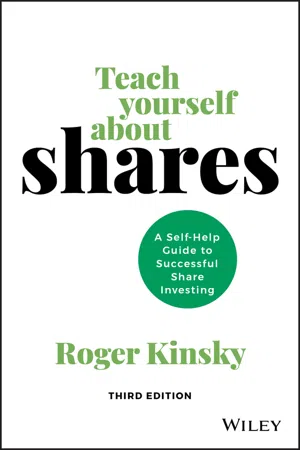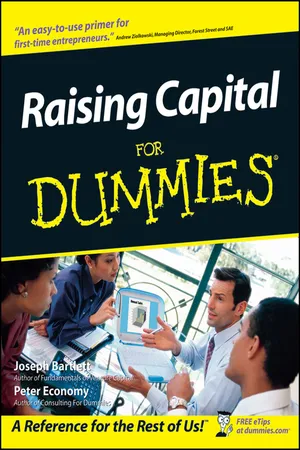Business
Stock Issues
Stock issues refer to the process through which a company offers new shares of stock to the public. This can be done to raise capital for various purposes such as expansion, debt reduction, or funding new projects. Stock issues can impact the ownership structure of a company and may influence its overall financial health.
Written by Perlego with AI-assistance
Related key terms
Related key terms
1 of 4
Related key terms
1 of 3
5 Key excerpts on "Stock Issues"
- eBook - ePub
Investor Relations
Principles and International Best Practices in Financial Communications
- Anne Guimard(Author)
- 2015(Publication Date)
- Palgrave Macmillan(Publisher)
Raise capital on the financial markets to help fund its development. Capital can be raised through debt (if the company issues bonds) or equity (if shares are issued). These two types of security can also be combined into hybrid instruments. The company’s Investor Relations program will relate to all of the securities issued since they are designed to reflect not only its overall image, but also to promote a specific category of securities. Equity can be a less expensive source of funding than bonds, but can be counterproductive if new issues dilute earnings per share. Different factors, such as financing costs and balance sheet structures, can prompt companies to issue other types of securities (bonds or hybrid instruments). The terms of the offering, notably the price, will have an impact on the success of the transaction, but investors are less likely to be interested if they are only a little, or not at all, familiar with the company, its track record, its management team, and its development strategy.Figure 1.1 Players and Objectives in Issuing Securities• Increase valuation . In general, public companies enjoy a higher valuation than private enterprises. Researchers and market specialists agree that valuation multiples tell whether an Investor Relations policy is successful. In other words, the market prices take into account transparency, clearly presented businesses and strategies, in addition to applying other more strictly financial stock selection and valuation criteria. In practical terms, this means that companies must provide the following:❍ - eBook - ePub
Teach Yourself About Shares
A Self-help Guide to Successful Share Investing
- Roger Kinsky(Author)
- 2020(Publication Date)
- Wiley(Publisher)
Chapter 7 Taking advantage of share issuesThe number of shares issued by a company is an important consideration for shareholders because it underpins the basic value of each share. As a share investor, it's important to understand how the number of shares can change and how any changes might affect you. In this chapter, I consider these aspects.Understanding how the number of shares affects the share price
If the number of shares on issue is changed without any change in profit or output, the share price will be inversely proportional to the number of shares on issue — that is, if the number of shares doubles, the price will halve and if the number of shares halves, the price will double. For example, if a company valued at $200 million issues 100 million shares, each share has an intrinsic value of $2.00. However, if 200 million shares are issued, the intrinsic value of each share reduces to $1.00.On the sharemarket, other factors often come into play and muddy the waters somewhat. For example, suppose a listed company issues 20% more shares at a price around the current market price. Investors anticipate that the additional equity capital the company receives will be put to good use by the directors and result in an increase in profitability of 30%. In this case, rather than the share price falling after the issue, it could well rise. However, if it's anticipated that the expected earnings won't increase in step with the additional equity capital obtained, the earnings per share will fall. The market won't like this and the share price will be downgraded.Changing the number of shares
Essentially, two changes to the number shares on issue can occur:- increasing the number of shares
- decreasing the number of shares.
Increasing the number of shares
After first listing, companies may issue additional shares. They usually do so in order to obtain more equity capital. They may need the additional capital for a number of reasons, such as: - eBook - ePub
- Alan R. Simon(Author)
- 2010(Publication Date)
- For Dummies(Publisher)
So enough with the brief commentary on financial days in the not-too-distant past. The point to remember is that aside from unique periods such as the last few years of the 1990s — an environment that may not be repeated for decades — just because you go to work at a privately held company and receive stock options does not automatically mean that your employer must go public. There is no cause-and-effect between your receipt of stock options and those options ever being usable on publicly traded stock of your employer.So if your employer never goes public, that’s bad, right? You’ve wasted several years (or maybe even longer) working long, hard hours for less money than you could make elsewhere, and have nothing to show for your sacrifices, right? Not necessarily!You must be able to make a distinction between your company’s success in business (or lack thereof) and the direction your company takes with regard to its financial structure. Even though IPOs have become closely associated with cashing in on the investing public’s voracious appetite for equity in young, growing companies; in reality, an IPO is little more than a change in the financial structure of a company.Instead of a limited number of stockholders who represent the ownership population of the company, suddenly ownership is open up to the general public at large. Additionally, an IPO brings a whole new group of restrictions and constraints to a company’s operational and financial management. Suddenly, the company must report earnings (or losses) in great detail on a quarterly basis, along with regular reports of the company’s assets and liabilities, cash flows, and other financial measures. Regular filings with the Securities Exchange Commission (SEC) must also take place.But aside from the paperwork (which the company’s management should be doing anyway even when privately held), becoming a publicly traded company changes the game with regard to how the company is financially managed. Suddenly, a whole lot of know-it-alls at investment houses and stock brokerages make public statements about where they expect your company’s earnings to be in the upcoming quarter or next year, or maybe even make bold predictions that your company’s stock will underperform that of your closest competitors. - eBook - ePub
- Brian Pillans, Nicholas Bourne(Authors)
- 2012(Publication Date)
- Routledge-Cavendish(Publisher)
CHAPTER 4ISSUE OF SHARES TO THE PUBLIC
4.1 Background
Although private companies are prohibited from offering their shares or debentures (collectively referred to as ‘securities’ in the legislation) to the public under s 81 of the Companies Act 1985, public companies are able to raise capital from the public at large. To facilitate this, public companies may obtain a listing of their securities on The Stock Exchange Listed Market or on the Alternative Investment Market. Alternatively, public companies may issue their securities directly to the public without obtaining a listing. The issue of securities to the public by companies is subject to extensive statutory regulation and common law control.Since the Financial Services Act 1986, The Stock Exchange has become a statutory recognised regulatory body. The Stock Exchange is the competent authority in relation to listing of shares under the EC Listing Directives.The Stock Exchange, or, to give it its full official title, The International Stock Exchange of the United Kingdom and the Republic of Ireland Ltd, underwent fundamental changes at the time of ‘Big Bang’ on 27 October 1986. Single capacity dealing ended as did fixed-rate commissions.The Stock Exchange currently runs two markets in company securities. These are the Listed Market and the Alternative Investment Market (AIM). The Listed Market (for those securities with an official listing) is in general utilised by large public companies. Companies with shares listed on the Listed Market must take care to ensure that they comply with The Stock Exchange Yellow Book, or the rules on Admission of Securities to Listing, as it is sometimes termed. The Alternative Investment Market offers the chance for a listing for medium sized companies. Companies desiring a quotation must comply with the rules of The Stock Exchange Alternative Investment Market (The Stock Exchange Green Book). The conditions for admission to the AIM are not stringent. There is no minimum trading period nor a minimum capitalisation. - eBook - ePub
- Joseph W. Bartlett, Peter Economy(Authors)
- 2011(Publication Date)
- For Dummies(Publisher)
Chapter 15
Initial Public Offering (IPO)
In This Chapter
Exploring IPOsDeciding whether you want to go publicLearning how to do an IPOTaking your show on the roadA n initial public offering, or IPO — just the mere thought of those three little initials is enough to send even the most sober company owner, executive, shareholding employee, or investor into soaring flights of fancy and dreams of soon-to-come wealth that even last month’s Powerball lottery jackpot can’t hold a candle to. And why not? Although IPOs have been around for years — they’re the traditional way that fledgling companies first sell shares of stock to the public to raise capital — the recent explosion of technology firms and dot-coms has brought IPOs into the public consciousness like never before. Even with the demise of those same offerings (and companies), the IPO still is viewed as the “big cash out” for company founders, owners, and investors. Certainly, significantly fewer are occurring now than just a few years ago, but the market has again regained some measure of sanity.The initial offering of an issuer’s securities to the public often is a watershed event — an achievement of a goal the founders have sought since the inception of the company, especially for founders who look at the IPO as an exit strategy, an event when they finally are able to convert their stake in the business into cash.
Index pages curate the most relevant extracts from our library of academic textbooks. They’ve been created using an in-house natural language model (NLM), each adding context and meaning to key research topics.
Explore more topic indexes
Explore more topic indexes
1 of 6
Explore more topic indexes
1 of 4




